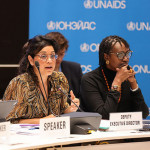POZ likes to say that information is power. In that spirit, we present the POZ Givers Guide. All these groups deserve your support, but before you give, you deserve to know how a group raises money and how it spends it.
The Guide includes factual information as well as subjective evaluation and comments. We encourage everyone to make their own assessments about each of these organizations. If you want more information, call either the National Charity Information Bureau or the Council of Better Business Bureaus and ask for a copy of their file on the charitable organization of your choice.
POZ polled seven executive directors and charitable-funding experts in order to establish our grading criteria. All information from groups is self-reported. Here’s how we arrived at the grades.
FUNDING SOURCES: “If you limit yourself to a particular kind of funding, you’re putting yourself up for great risk,” says Bill Misenhimer. Groups that received more than 50 percent of their funding from a single source received an F; groups with more than 50 percent of total funding from special events or the government received a D. An A went to groups with diversified funding sources and at least 10 percent of their income from direct marketing, a steady, forward-thinking source of income.
USE OF MONEY: Groups got an A if less than 15 percent of their budget went to overhead, meaning administrative expenses that include fundraising costs. Only groups with 40 percent or more administrative expenses got an F. We defined administrative expenses as those that could not be allocated back to a program. Still, slight variations in accounting methods between groups may have resulted in a different grade for the same real overhead. The United Way standard for overhead is 25 percent of total budget.
CASH RESERVE: “You shouldn’t sit on money in a crisis,” says Gregory Britt. True, but POZ believes that a group should have at least a month’s reserve in case there’s a dry period. Groups with one month’s reserve received a B, groups with up to two months received an A. Groups with less than a month’s reserve received a C. An F went to groups with more than two months operating expenses. Some executive directors believe in zero cash reserve; if you agree, then when we assign a D would be an A to you.
BOARD OF DIRECTORS: The board is sometimes an organization’s brain, rarely its hands, but always its soul. Out of fairness to the organizations and a reluctance to make politically correct judgments based on demographics, a B is the benchmark; an A means it’s obvious that there’s great representation, and the grades decrease as the composition of the board seems to bely its ability to really understand its target constituency. An F was reserved for groups that have no openly HlV positive people on their board.
THE PANEL: Bob Boswell, executive director of the Committee for Responsive Philanthropy in Washington, D.C.; Gregory Britt, executive director of AIDS Research Alliance in Los Angeles; Rodger McFarlane, former exccutive director of Broadway Cares/Equity Fights AIDS in New York City; Bill Misenhimer, chief financial officer of AlDS Project Los Angeles (APLA); Michael Seltzer, executive director of Funders Concerned About AIDS in New York City; Steve Wakefield, executive director of the Night Ministry, former executive director of Test Positive Aware Network (TPAN) in Chicago; and Bennett Weiner, director of the Philanthropic Advisory Service of the Council of Better Business Bureaus in Arlington, Virginia.
The POZ Givers Guide was compiled by David Thomas with additional reporting by Melanie Zurlo and Johnjon Emigh.
Read the digital version here.











Comments
Comments